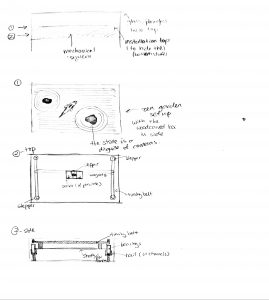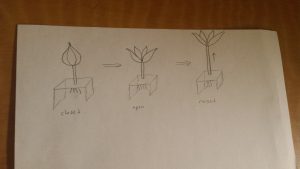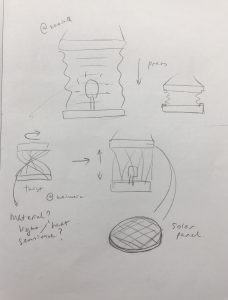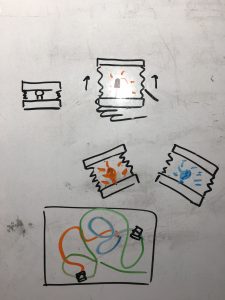SooJin Sohn – DRAW YOUR MUSIC (Proposal – Draft 1)
- Abstract/Concept:

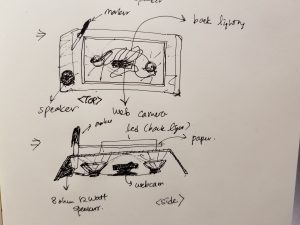
The core objective of this project is to explore the possibilities in conversion of media through user interaction. This project is designed to capture and scan a hand-drawing on a piece of paper, translate the coordinates of the drawing into musical notes.
- Material:
- Arduino UNO – 1
- Clear acrylic boards (paper scanning area)
- White paper
- Black marker (the ink needs to be strong and heavy enough to bleed through the other side of the paper)
- A web camera
- some back lighting material for eliminating shadows
- A push button – that triggers the camera to initiate scanning/translating of drawing into music
- Some heavy Processing/MAX and Arduino coding
- Plans for Production:
- Make sure to build the code in the following steps:
- Control the webcam to capture a fixed frame size of a paper.
- Manipulate the captured image into grayscale, and define an array that saves all RGB values of each pixel.
- Map the captured image pixels into 0 to 1, and 50Hz to 1500Hz (serial communication between Arduino and Processing)
- Print the mapped value coordinates
- Serial communicate the coordinate values to Arduino, and print the coordinates into auditory data.
- Build the hardware
- Use the acrylic boards, and glue the webcam along with the back lighting switch.
- Connect a simple push button switch to the Arduino (the push button should work as the trigger for scanning and initiating the translation of the image to music)
- Make sure to build the code in the following steps:

